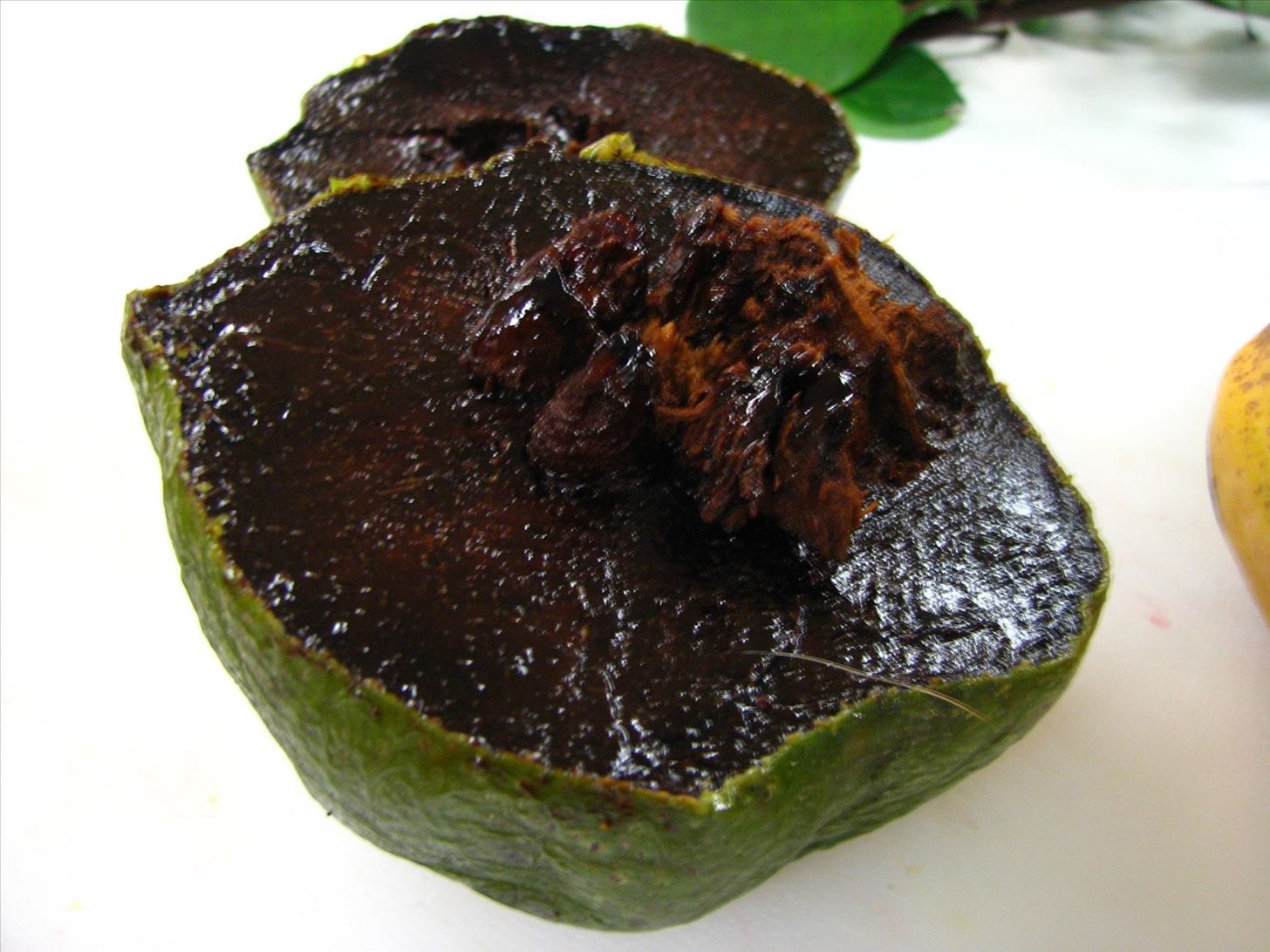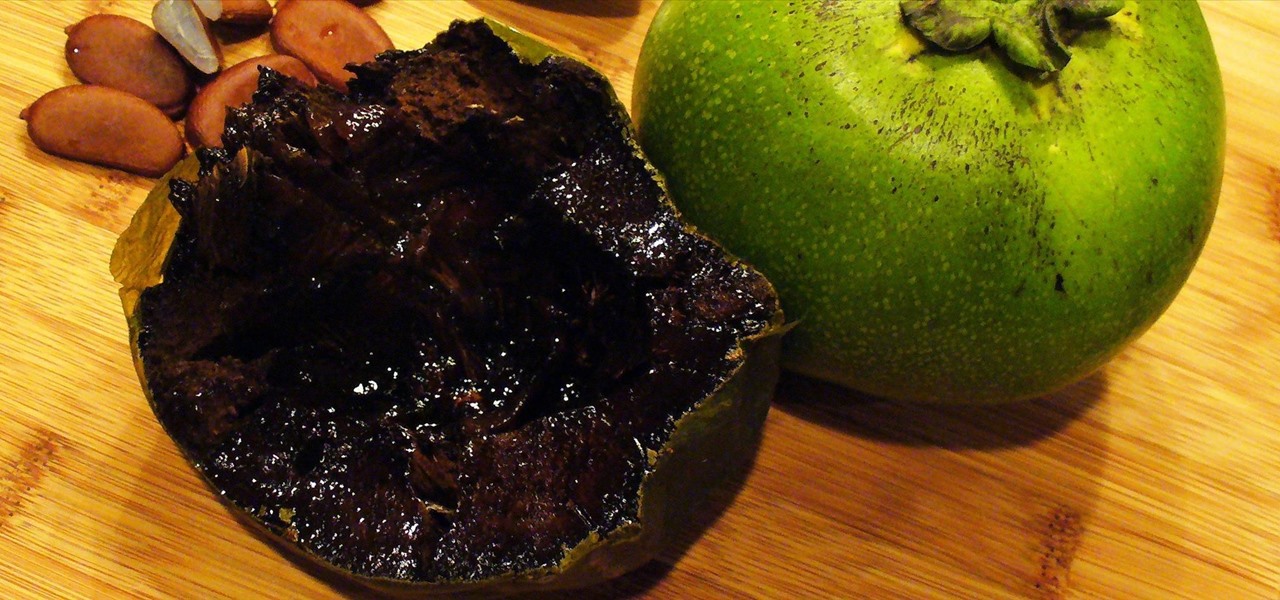Mother Nature is one creative entity, especially when it comes to fruit. Let's face it: most major supermarkets stock only the most common fruits like apples, pears, and grapes, but they're so basic. Why not explore other options, from the stinky-yet delicious durian to the captivating citrus caviar that is finger limes?
Add one more must-try fruit to that list: black sapote, which is unsurprisingly nicknamed "the chocolate fruit" due to its dark, richly hued flesh.

Oh, and the kicker? Black sapote actually does taste somewhat like chocolate pudding, with a similar silky texture and a mild, chocolatey taste. So skip your gluten- and sugar-free alternatives and get out and find one of these fruits, stat.
Black sapote (Diospyros nigra) look like bright-green tomatoes, and are high in vitamins A and C (purportedly having four times the amount of vitamin C found in an orange). As they ripen, the outsides will turn olive green and the insides will deepen and become a dark, rich brown.
While black sapote is native to Mexico and Central America, it's also grown in the Philippines and other tropical areas. It hasn't caught on much in the U.S., although it does grow successfully in southern Florida.
It's a shame, because the sapote's natural sweetness and outstanding chocolate flavor (have we mentioned that already?) make it a natural fit as a dessert on its own or when added to other recipes.
Check out this raw and vegan "chocolate" sapote dip with fresh strawberries from Heartbound Living:

Or this chocolate-and-sapote cake with kumquat marmalade from Fragrant Vanilla:

There's also this Mexican vanilla and sapote bread from the Travel Bite:

You can also try making this tropical black sapote pudding, pie, and "unchocolate" bread from the Virtual Herbarium:

If you're interested in trying black sapote, hit up any Asian or Hispanic markets in your area. Seasons for sapote vary—many Mexican varieties bloom from August to January, while others are best in the height of summer. If you've got a garden and the right climate, you can also buy black sapote trees from Tom's Tropical and take your chances. Just be sure to share the bounty!
Want More Weird Ingredients?
Expand your culinary vocabulary and learn about intriguing, new-to-you, or just plain strange ingredients from around the globe. Another delicious dark-hued food is black garlic, garlic's better-mannered sibling. Bee pollen is touted for its health benefits, but it also makes a great vinaigrette. Fish sauce is a staple of Vietnamese cooking, and works well in just about any kind of savory dish, really. If you really want to blow people's minds, try making a dessert with Lactarius rubidus—the mushroom that tastes like candy.
Just updated your iPhone? You'll find new emoji, enhanced security, podcast transcripts, Apple Cash virtual numbers, and other useful features. There are even new additions hidden within Safari. Find out what's new and changed on your iPhone with the iOS 17.4 update.























Be the First to Comment
Share Your Thoughts